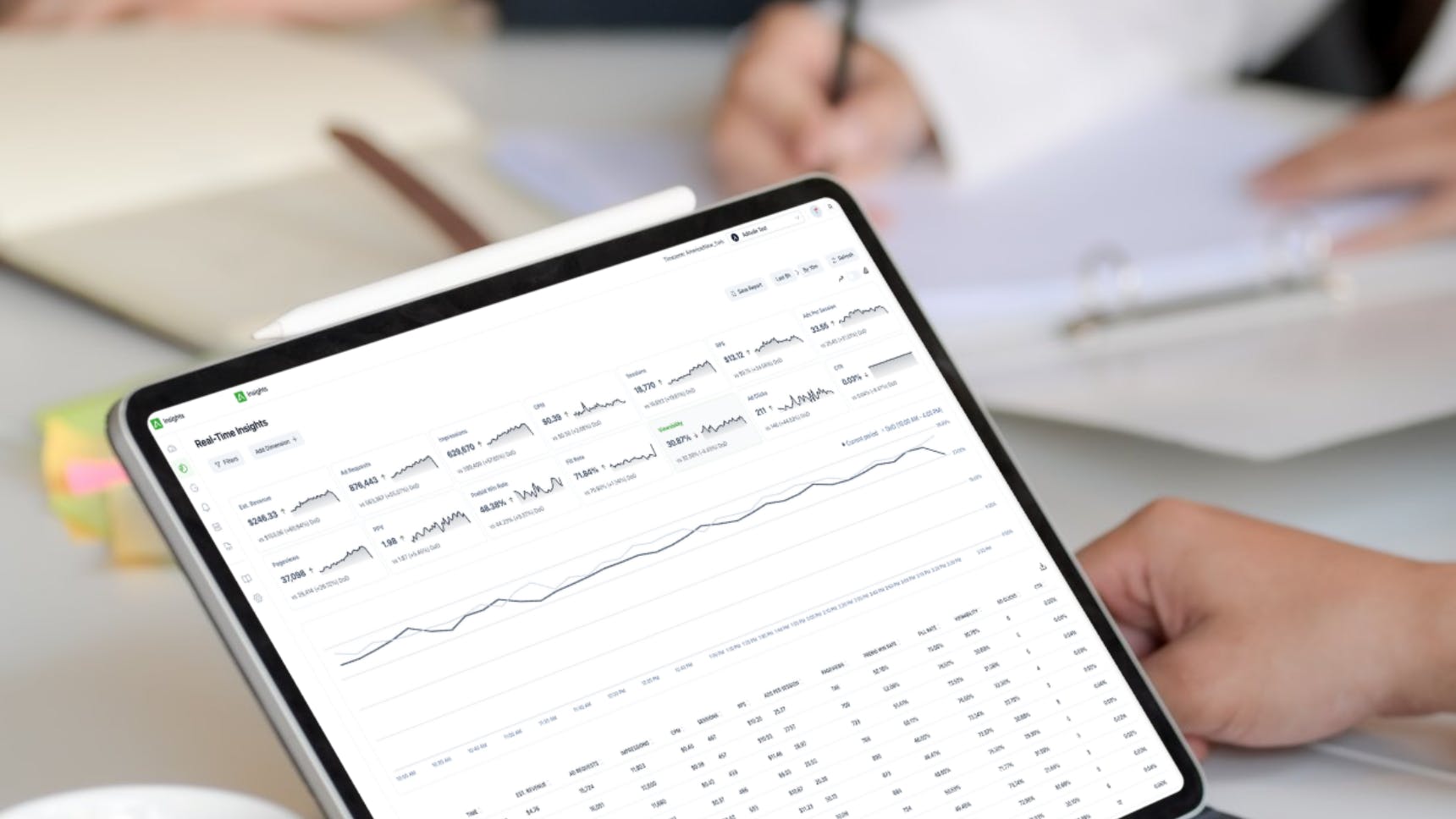Navigating Ad Tech Seasonality in the Summer

As a publisher, understanding the ebb and flow of ad revenue throughout the year is crucial for strategic planning and maximizing your earnings. The summer season, in particular, presents unique challenges and opportunities in the ad tech space. This blog dives into the seasonal trends of the ad industry, with a specific focus on how publishers can navigate the summer months to optimize their ad revenue.
Understanding Seasonal Trends in Ad Revenue
Ad revenue is not a static metric; it fluctuates significantly based on the time of year and is primarily influenced by advertiser budgets, consumer behavior, and seasonal events. Here's a quarterly breakdown to give you a directional understanding of how ad revenue typically trends throughout the year:
- Q1 (January - March): This quarter often starts with a significant dip in ad revenue, particularly in January, due to a post-holiday lull. Advertiser budgets are usually exhausted from the previous quarter’s holiday spending, resulting in lower CPMs and RPMs.
- Q2 (April - June): Ad revenue tends to pick up as the quarter progresses, with June often being one of the higher revenue months of the year. Many advertisers aim to use up their annual budgets before the fiscal year ends, leading to increased spending.
- Q3 (July - September): The summer months, particularly July and August, often see a slowdown in traffic and revenue for many publishers. However, strategic content updates and ad placements can help mitigate this seasonal slump.
- Q4 (October - December): This is the peak season for ad revenue, driven by holiday shopping and increased consumer spending. Advertisers invest heavily to capture the heightened demand, resulting in high CPMs and RPMs, especially in November and December.
Impact of Summer Seasonality on Ad Revenue
During the summer months, several factors contribute to the seasonal decline in ad revenue:
- Lower Traffic Volumes: Many users are on vacation or spending more time outdoors, leading to a drop in online activity and traffic.
- Reduced Consumer Spending: Without significant shopping events or holidays, consumer spending typically declines in the summer, affecting advertiser budgets and campaign performance.
- Advertiser Budget Cycles: Many companies may have already exhausted their budgets in Q2 or are holding back in anticipation of the heavy spending period in Q4.
Despite these challenges, the summer offers unique opportunities for publishers to optimize their ad strategies and content to maintain or boost revenue.
Strategies for Maximizing Ad Revenue in the Summer
1. Content Optimization and Updates
Updating historical top-performing content is a proven strategy to sustain and even boost your ad revenue during the slower summer months. Here's how you can effectively refresh your content:
- Identify Top Performers: Use tools like Google Analytics to identify content that has performed well in previous summers. Focus on updating these posts with new information, images, and relevant links.
- Enhance Content Quality: Check the top-ranking pages for your target keywords and analyze what they offer. Enhance your content with additional information, updated FAQs, and engaging multimedia like videos and infographics.
2. Expand Content Coverage with Clusters
Creating content clusters can help you thoroughly cover relevant topics and improve your site's authority and SEO performance. Here are some summer-specific content cluster ideas:
- Summer Travel: Cover topics such as popular destinations, packing tips, itineraries, and travel guides.
- Outdoor Activities: Write about hiking trails, camping tips, water sports, and family-friendly activities.
- Summer Recipes: Share BBQ and grilling recipes, cooking tips, and product recommendations for summer feasts.
- Summer Style: Discuss fashion trends, outfit ideas, and tips for staying stylish in hot weather.
- Gardening: Offer advice on summer gardening, plant care, and landscaping tips.
- Fitness and Wellness: Provide workout routines, healthy eating tips, and self-care practices.
Creating and interlinking content within these clusters can enhance user engagement and improve your chances of ranking higher in search results.
3. Leverage High-Impact Ad Units
During the summer, consider integrating high-impact ad units such as video ads to offset the typically lower CPMs. Video ads, especially outstream units, can be highly effective as they do not require original content and can contribute significantly to overall ad revenue.
- Implement Video Ads: Many users expect to see video ads, which can generate substantial revenue. Test different formats and placements to determine what works best for your audience.
- Optimize Ad Placement: Ensure your ad units are placed in high-visibility areas to maximize impressions and engagement.
4. Focus on Quality Improvements
Summer is an excellent time to focus on quality improvements across your content inventory. Review your top-performing articles and pages and update them for better quality and relevance. This improves user experience and enhances your SEO performance, increasing traffic and ad revenue.
- Audit and Update Content: Regularly audit your content to identify areas for improvement. Add new information, update outdated facts, and ensure all links are functional and relevant.
- Enhance User Experience: Add clear headings, bullet points, and multimedia elements to improve the readability and usability of your content.
5. Seasonal Content Creation
Creating content that aligns with summer themes can attract more visitors and increase engagement. Consider topics that resonate with your audience's summer interests and needs:
- Travel and Vacation: Write articles about the best travel destinations, vacation planning tips, and travel gear recommendations.
- Summer Events: Cover local and national summer events, festivals, and activities your audience might be interested in.
- Outdoor Tips: Share tips for enjoying outdoor activities, such as hiking, camping, and beach outings.
By aligning your content with seasonal trends, you can attract more visitors and keep your audience engaged throughout the summer.
Preparing for the Seasonal Peaks Ahead
While summer may slow down traffic and revenue, it is also a valuable time for preparation and optimization. By focusing on content updates, quality improvements, and strategic ad placements, you can mitigate the impact of the summer slump and set the stage for a successful Q4.
As Q3 progresses, monitor your ad performance and content and make necessary adjustments to capitalize on emerging trends. With careful planning and execution, you can navigate the seasonal challenges of the ad tech landscape and maximize your revenue potential year-round.
Conclusion
Seasonality in ad tech presents both challenges and opportunities for publishers. By understanding the trends and leveraging strategic initiatives, you can optimize your ad revenue even during the slower summer months. Focus on content updates, quality improvements, and high-impact ad units to maintain and boost your earnings. With the right approach, you can turn the summer slowdown into a period of growth and preparation for the lucrative months ahead.
Feel free to reach out to our team at adops@aditude.io to strategize how to limit seasonality's impact!




